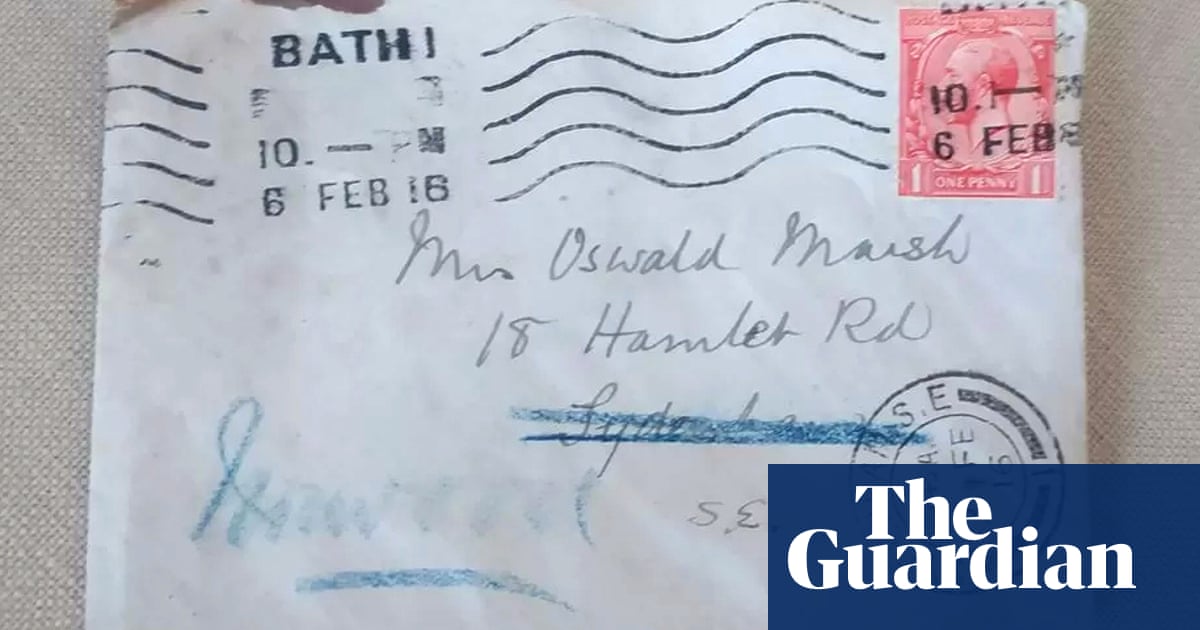
A long-lost Amazon documentary described as “the holy grail of Brazilian silent cinema” has been rediscovered nearly a century after it went missing.
Amazonas, Maior Rio do Mundo (Amazon: Longest River in the World)was stolen from the original director, Silvino Santos, shortly after it was made in 1918. Just over a decade later, it had completely disappeared. The film resurfaced earlier this year in a Czech archive and was identified by specialists in Italy and Brazil.
“It’s basically a miracle,” said Sávio Stoco, the Brazilian expert on Santos who confirmed the discovery. “We didn’t have the slightest hope that this work would one day be found.”
A Portuguese-born cinematographer who spent most of his life in the Amazon, Santos was one of the main non-fiction film-makers of early 20th century Brazilian cinema. He is best remembered for his 1922 documentary No Paiz das Amazonas (In the Country of the Amazons), which experts read as an attempted remake of his lost production.
The 1918 film is considered a rare gem of Brazilian cinematography for its length, subject matter, and quality of composition. Featuring fascinating footage of the Amazon forest’s diverse landscapes and inhabitants – including some of the earliest known moving images of the Indigenous Witoto people – the feature-length film “mixes different dimensions of the documentary genre into a very enjoyable narrative for the viewer”, explains Stoco, a professor of visual arts at the federal university of Pará in Belém.
Santos takes his audience on a remarkably detailed journey through the Amazon, alternating close-up shots of caimans, jaguars and tropical flora with footage of Indigenous rituals and longer sequences showcasing the region’s extractive industries: rubber, the Brazil nut, timber, fishing, even the egret feathers that were a staple of women’s fashion at the time.
The lost documentary gained mythical status in Brazil with the story of its disappearance, which was recorded by Santos in an unpublished memoir written shortly before his death in 1969.
Shot over three years in the Peruvian and Brazilian Amazon, the film vanished before it could be screened in Brazil and bankrupted its Manaus-based production company. The negative was stolen by an associate of Santos, Propércio de Mello Saraiva, who was negotiating the documentary’s international sale.
Instead Saraiva pocketed the print, claimed he was the director, and fraudulently signed a deal with Gaumont to distribute the film in England, where it was retitled Wonders of the Amazon. The documentary circulated to great acclaim in Europe for a few years, but by 1931 all traces of it had vanished.
“It is still in the orbit of the planets,” Santos wrote in his memoir.
However, a negative copy of an older, now disintegrated nitrate print of the film survived at the Národní filmový archiv, in Prague, where it had been miscatalogued as a US production from around 1925. Doubting its labelling, a curator sent a copy earlier this year to Jay Weissberg, a specialist in silent cinema.
“Within seconds, I knew it was not 1925, it was much earlier, and it certainly had nothing to do with anything anyone in the US might have made,” says Weissberg, who is director of Italy’s Pordenone silent film festival where the documentary will be screened this week.
Stoco then confirmed Weissberg’s hunch that the Amazon footage was “the holy grail of Brazilian [silent] documentaries”.
Further showings are planned later this year in the Czech Republic and Brazil, although screening the documentary today raises questions about Santos’s colonialist gaze.
“It is of course a film marked by the perspective of the time and by its financiers, who were members of Manaus’s commercial elite,” says Stoco.
As well as its unabashed focus on publicising the forest’s economic potential, the film exoticises Indigenous peoples without acknowledging the horrors they faced .
The early 20th century rubber boom enslaved and exterminated Indigenous communities, including the Witoto who were forced out of isolation in their native Colombia, with some communities fleeing to Peru and Brazil. Early in his career, Santos was funded by a notorious Peruvian rubber baron.
“[He] couldn’t talk about the atrocities that were taking place,” Stoco says, arguing that the film remains important precisely for its perspective of the Amazon as “a region to be exploited” – a view that continues to drive the devastation of the rainforest and its native populations today.












